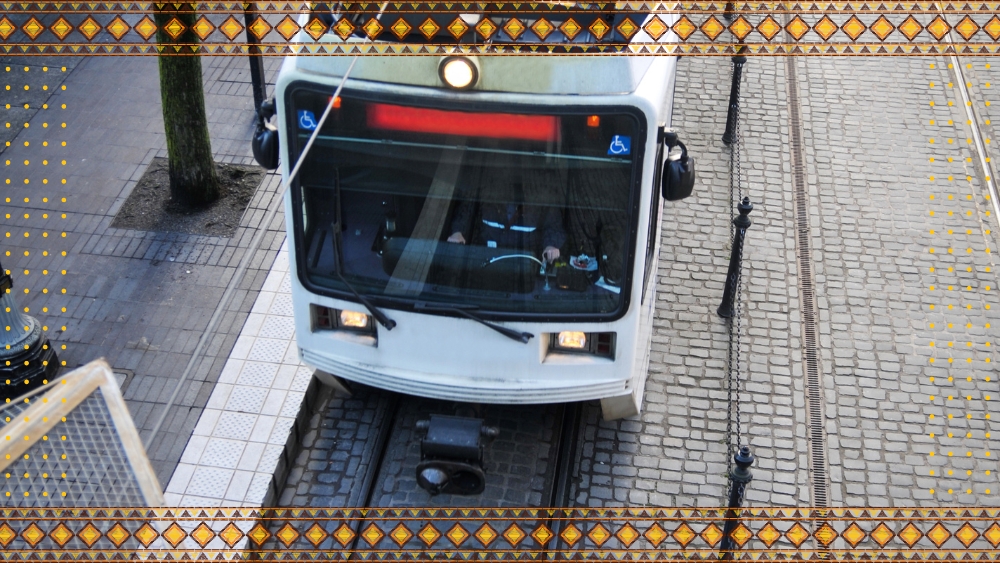By Peter White
People don’t want to ride public transit for fear of being harassed like Esther Lee was on a New York subway October 21, 2021. Lee, 41, is a Korean American. She was insulted, spit on, and called “a f***g carrier.” She filmed 57-seconds of the ugly encounter on her cell phone. Nobody came to her aid and at 42nd St. Lee got out and switched cars.
Lee reported the incident to New York’s Hate Crime Unit, but Deputy Inspector Jessica Corey told her she had escalated the situation by filming it and since the man didn’t use an Asian slur, there was no evidence of a hate crime. However, two months later a Civilian Review Panel saw the video and labeled Lee’s case a hate crime. Then she went public to a local TV station.
“If cases like mine were not being labeled as a hate crime, that meant that many more similar incidents were being mislabeled and dismissed,” Lee said.
Peter Kerre founded Safe Walks NYC in January 2021. He created an Instagram page, setting up a program of volunteers to walk with people to and from transit stops in Brooklyn. In May 2021 Safe Walks expanded to cover Manhattan below 59th St.
Esther Lee, who was attacked on the New York subway system, details her experience and the police department’s failure to appropriately handle her case.
“Communities were eager for public safety solutions that did not involve law enforcement. Safe Walks was a great fit, especially for women of color, many of whom reported having negative interactions with the New York Police Department,” Kerre said.
During an Ethnic Media Services press call last week, Kerre told reporters that in most cases victims were alone. “Not only in the subway but walking from the subway or walking elsewhere in the city,” he said.
“So simply having an extra person with you will make a very big difference.” Kerre said if people feel unsafe, a volunteer can ride with them on the subway.
However, it has not solved “the massive intersection of crises” that are at the root of the problem and ever-present on New York subways, says Kerre.
First of those: all the hate crimes mainly targeting the Asian American and Pacific Islander community (AAPI). Second, all the mentally ill people on the street. Third, all the homeless who are in crisis due to unemployment and financial hardships, and then there is the “elephant in the room”: a breakdown in trust between law enforcement and the community.
“They’ve been flooding the New York subways with a massive police presence, increasing surveillance cameras and extracting the unhoused and unwell folks from the transit system but there’s been no indication of what’s being done with them. Many times they end up back within the subway system.”
Collecting data on ridership, ethnicity, and gender would help define the problem but so far New York officials haven’t done that like in California.
“What Senate Bill 434 would do is require that California’s top 10 largest public transit systems collect data from their passengers on the problem of harassment and uncomfortable behavior,” says California State Senator David Min. Min, the only Kirean American in the California Senate, is Vice Chair of the California Asian and Pacific Islander (API) Legislative Caucus.
Min named the bill ʻPublic Transit for All: Improving Safety & Increasing Ridership’ and introduced it February 13. A former law professor who specialized in banking and housing policy, Min has testified six times before Congress on these issues.
Safe Walks NYC founder Peter Kerre says that by simply accompanying a person who would otherwise be alone, Safe Walks has already made a big difference in keeping New York City transit riders safe.
“There’s a saying in academia that the plural of anecdote is data, and so we need hard data at this point if we want to develop solutions. What this would do is to give a voice to the millions of transit riders throughout the State of California,” he said.
Once we have that data, then we can start to develop solutions, Min says.
Janice Li is Board President of the Bay Area Rapid Transit System (BART). Her day job is with Chinese for Affirmative Action, a San Francisco-based organization that has led Asian American civil rights advocacy for more than 50 years.
Li says BART’s pre-COVID riders made 430,000 trips on an average weekday and made up 70% of Bart’s operating costs, about $1 billion/yr. But during the lockdowns ridership dropped to four percent and has since rebounded to just 40% of what it was.
“We will not continue to exist if we cannot find new revenue streams,” Li says.
BART’s average rider has changed. Two-thirds are non-white, one third are in households with incomes under $50,000, and 44% don’t own cars. For the working poor of the Bay Area, BART is an essential mode of transportation.
“BART knows that in order to bring back riders, we must continue to prioritize safety. I am proud of the many new initiatives that we launched over the past three years, including our BART ambassador program, bathroom attendants, elevator attendants, and crisis intervention specialists,” Li said.
Making people feel safe means putting more BART personnel in our stations, at our platforms, and riding trains throughout our 50-station system spanning five Bay Area counties, she says.
BART has two new initiatives — Not One More Girl, which is a youth-led campaign to address gender-based harassment and violence on BART, and Let’s Talk About Us, an art campaign to bring visibility to domestic violence in AAPI communities.
“These campaigns are creative and engaging ways for our riders to learn what they can do if they witness these situations happening and resources if they are victims or survivors themselves,” Li said.
Crime on BART trains is down to 7.45 crimes per 1 million trips. There were two homicides at the 24th St. Mission station last year. “Both times they were conflicts that happened in the neighborhood at the street level, where the victims ended up escaping into our underground system,” Li said.
She says what’s needed is more community-based resources to address homelessness, drug addiction, and mental health crises.
Source: Published without changes from Ethic Media Services


